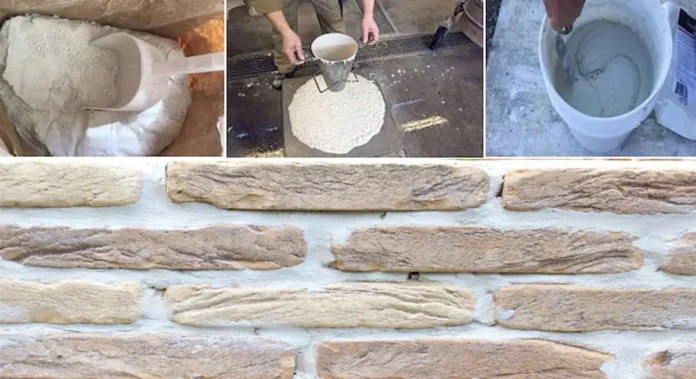White cement concrete possesses similar properties to grey Portland cement, but the primary distinction lies in its fineness and color. The white hue of this cement is achieved through specific manufacturing processes and the use of raw materials. It offers a wide range of color options for creating architectural and structural concrete.
How White Cement is Produced?
White cement is produced using raw materials that contain little to no iron or manganese. Typically, it incorporates china clay alongside limestone or chalk. For white cement concrete, it is crucial to use white Portland cement that adheres to the standard specification ASTM C150. Compared to OPC cement, white cement exhibits lower compressive strength.
During the manufacturing process, a significant amount of iron and manganese is added to enhance the cement’s whiteness, making it more expensive. White cement concrete is often referred to as snow Crete, as it produces a homogeneous concrete with an exact color for structures.
Developing white cement requires approximately 40% more energy than normal grey cement, which contributes to its higher cost. Light-colored sand and the whitest chalk are used in the production of white cement.
How to Select the Right Raw Materials:
#1. Cement: White cement is available in bulk or bagged form. When storing bagged white cement, it should not come into contact with the ground. If stored on a concrete floor, the cement should be placed against exterior walls.
White cement bags should be kept on pallets and protected from weather conditions, ensuring they are kept off the ground. Due to the low soluble chromium content, white cement should be stored for a minimum of 6 months when provided in proper dry conditions.
#2. Aggregates: The choice of aggregates for white cement should include white marble, white granite, and crushed calcinated flint. The selection of coarse aggregates plays a crucial role in determining the final appearance of white concrete.
Fine aggregates, especially the filler particles, should have a size lower than 0.25mm. Care should be taken to maintain consistency in the aggregate mix between batches to avoid shading issues in the finished products.
#3. Water: Water used in white concrete should be clean and free from organic impurities. The water-cement ratio for white concrete is higher compared to normal concrete and is critical in determining the final strength of the concrete.
Characteristics of White Cement Concrete:
- The initial setting time of white cement should be 100 minutes.
- The fineness of white cement should be 395 kg/m2.
- The brightness of white cement should remain at 87%.
- The compact density of white cement should be 3150 kg/m3.
- The bulk density of white cement is 110 kg/m3.
- Compressive strength after 1 day is 21 MPa, after 2 days is 38 MPa, after 7 days is 61 MPa, and after 28 days is 74 MPa.
Applications of White Cement:
- White cement is effective for decorative works and prestigious construction projects.
- It is used to create brightly colored concrete and mortars.
- Due to its whiteness, it is suitable for interior and exterior decoration.
- White cement is frequently used on roads to enhance visibility on highway medians.
- It is useful for manufacturing a large number of precast members.


